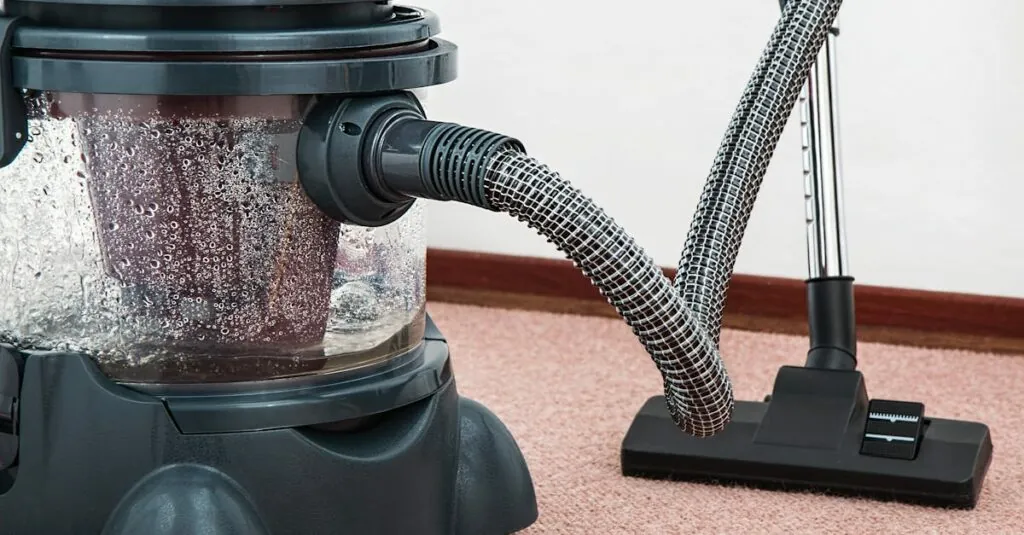Maintaining a resin printer tank might not sound as thrilling as a rollercoaster ride, but neglecting it can lead to some pretty messy—and expensive—disasters. Picture this: you’re all set to print your masterpiece, only to find your tank looking like a science experiment gone wrong. Yikes! Proper maintenance not only keeps your printer running smoothly but also ensures your creations turn out flawless.
Table of Contents
ToggleImportance of Resin Printer Tank Maintenance
Maintaining a resin printer tank stands as a critical aspect of successful 3D printing. Routine upkeep prevents messy spills and costly damages. Without proper care, residue builds up and leads to print failures or poor quality outcomes. High-quality prints rely on a clean tank; neglect can compromise clarity and detail.
Clear tanks enhance the performance of the printing process. Transparency allows for better monitoring of resin levels and conditions. Regularly checking for debris or cured resin ensures that each print starts on the right foot. Skipping these checks can result in unnecessary interruptions during production, impacting timelines and productivity.
Attention to the tank’s condition directly affects print accuracy. A contaminated tank can introduce artifacts, negatively influencing the final product. Consistent cleaning routines protect against calamities that can emerge from neglect. Following manufacturer guidelines tailored for specific resin types promotes optimal tank performance.
Professionals suggest a maintenance schedule, ideally every few prints. Daily inspections help identify potential issues early on. Storing resin properly and maintaining a dust-free environment contribute significantly to tank longevity. These practices reduce wear and increase the lifespan of the printer.
Prioritizing resin printer tank maintenance ensures operational efficiency and high-quality results. Implementing a diligent care routine minimizes the risk of hindrances and maximizes the potential of 3D printing technologies. Each component, from tank cleanliness to resin quality, plays a role in achieving seamless prints.
Common Issues with Resin Printer Tanks
Maintaining a resin printer tank is critical to avoid common issues that arise from neglect. Identifying and addressing these problems ensures optimal performance and high-quality prints.
Clogged Filters
Clogged filters can disrupt the resin flow, causing printing failures. Regularly inspecting filters for debris prevents clogging and maintains a steady resin supply. When debris accumulates, it can lead to uneven prints or damaged components. Prompt cleaning or replacement of filters minimizes risks associated with debris buildup. Scheduled maintenance every few prints ensures filters remain effective, keeping resin clean and flowing smoothly.
Scratches and Damage
Scratches and damage on the tank surface can impact print clarity. Each scratch serves as a potential site for resin accumulation, leading to contamination. Regular visual inspections help identify surface abrasions before they worsen. When damage occurs, assessing the extent determines whether repair or replacement is necessary. Maintaining a protective cover when not in use can prevent unnecessary scratches, preserving tank integrity for better print quality.
Maintenance Tips for Resin Printer Tanks
Maintaining a resin printer tank is crucial for achieving high-quality prints. Regular inspections and cleaning play a significant role in preventing issues and ensuring optimal performance.
Regular Cleaning Procedures
Cleaning should happen frequently to keep the tank in top condition. Begin by emptying any remaining resin and disposing of it properly. Next, use isopropyl alcohol or dedicated resin cleaner to wipe down the tank’s interior. Cleaning tools like soft cloths or brushes are effective in removing cured resin residues. Visual inspections during this process help identify any scratches or debris that may affect print quality. After cleaning, ensure the tank is completely dry before refilling it with fresh resin. Establishing this routine after every few prints can significantly extend the tank’s lifespan while maintaining print clarity and accuracy.
Best Practices for Resin Storage
Proper resin storage enhances the effectiveness of the printer tank. Store resin in a cool, dark place to prevent premature curing. Utilize opaque containers that seal tightly to avoid exposure to light. Label each container with the resin type and date for easy reference. Following manufacturer recommendations on compatible conditions ensures the resin remains usable. Keeping the storage area dust-free further protects the resin from contamination. It’s essential to monitor expiration dates and dispose of expired resin responsibly. Prioritizing these practices helps maintain resin quality and ensures optimal printing results.
Tools for Effective Maintenance
Using the right tools ensures effective maintenance of resin printer tanks. The following categories of tools help achieve optimal results.
Recommended Cleaning Equipment
Employing suitable cleaning equipment is vital for maintaining the tank’s integrity. Soft cloths or microfiber cloths prevent scratches while cleaning. Additionally, brushes with soft bristles are effective for removing cured resin residues without damaging surfaces. Isopropyl alcohol is commonly recommended for cleaning tanks, allowing thorough removal of contaminants. Dedicated resin cleaners also enhance cleaning performance, ensuring that no debris or residue remains. Finally, having a pair of gloves protects hands from resin exposure during the cleaning process.
Essential Replacement Parts
Certain replacement parts play a crucial role in maintaining a resin printer tank. Regularly inspecting filters prevents clogging, which can disrupt the resin flow. Having spare filters on hand allows for quick replacements as needed. Furthermore, tank surfaces might develop scratches over time, necessitating replacement if damage becomes significant. A collection of spare parts promotes seamless operation, ensuring that the printer remains functional. Keeping these components organized and accessible simplifies maintenance and reduces downtime.
Conclusion
Maintaining a resin printer tank is essential for achieving high-quality prints and ensuring smooth operations. Regular inspections and cleaning help prevent issues like clogged filters and surface scratches that can compromise print clarity. By following manufacturer guidelines and establishing a maintenance schedule, users can significantly extend the lifespan of their tanks and enhance overall printing performance.
Proper resin storage and a dust-free environment further contribute to optimal results. Investing time in tank maintenance not only saves money on repairs but also elevates the quality of 3D prints. Prioritizing these practices will lead to a more efficient and successful printing experience.




